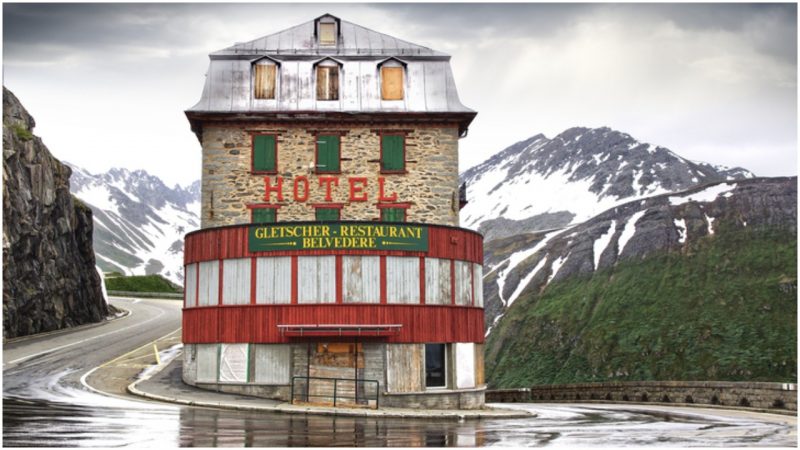It’s 1964. A mass craze has built up about director Guy Hamilton’s take on Ian Fleming’s James Bond spy series, and everyone was eager to see how it would turn out. Terence Young did brilliantly with the first two installments, Dr. No in 1962 and From Russia With Love the following year.
Now the time has come for Goldfinger, the third James Bond film, and on Thursday, September 17, it was unveiled to the eager public at the Odeon Leicester Square in London, where stars attended the world premiere, and “5,000 fans fought the police outside, the massive glass door of the theater was shattered and police reinforcements had to be sent for,” in order to stop the crowd from entering the premises. According to a report by Kinematograph Weekly that surfaced about a week later, Sean Connery’s co-star Honor Blackman was nearly tackled to the ground from fans who tried to reach her when she arrived for the premiere–in a gold dress, naturally.
Thankfully unscratched and unharmed, Blackman sat down with the rest of the cast in the VIP section of the theater, and as the lights went dim, Maurice Binder’s iconic Bond gun barrel opening sequence marked the beginning of a new, and this time much-anticipated, Bond adventure.
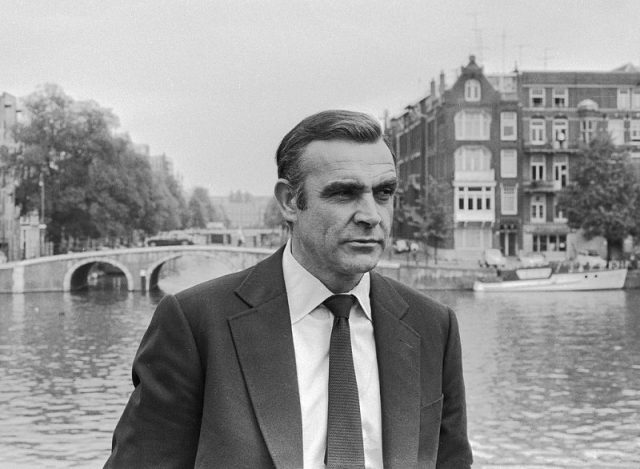
And there it was. The pre-title teaser sequence. James Bond is back! Connery himself, unfortunately, could not attend the premiere and watch himself rising out of water with a duck on top of his head as a disguise, plants C4 explosives inside a drug lord’s secret lab, only to step gallantly into a Latin club above right after, well dressed in that off-white, ivory dinner jacket adorned with a slick bow-tie and a red carnation on the left lapel as the icing on the cake called the elegance of Bond. He throws that self-assuring glimpse at his Rolex Submariner 6538 wristwatch, pulls out a cigarette, lights it up, and the whole place underground goes Boom!
Just like that, everyone witnessed that “everything he touches turns to excitement” indeed, as the tagline had advertised for months. The world learned how to wear a white suit like a Bond, and, as for the man himself, well he went to attend some unfinished business laying in a bathtub.
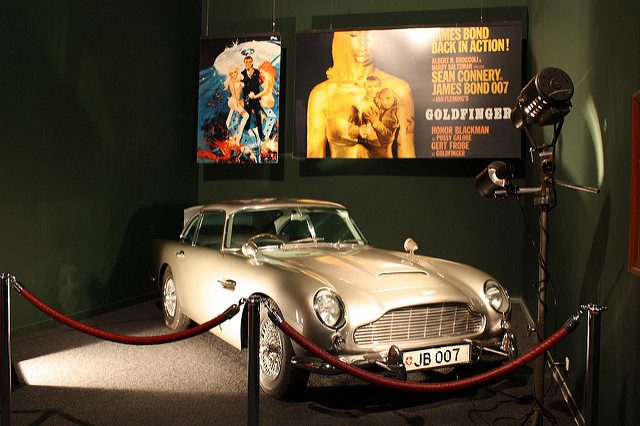
Shortly after, Shirley Bassey, with her magnificent voice, announced the title and with that, MI6’s new mission kicks off, one that takes the debonair secret agent to Fort Knox on the trail of Auric Goldfinger (Gert Fröbe). He’s a powerful billionaire and a bullion dealer who is suspected of gold smuggling and assumed to be plotting “the crime of the century.” A sinister plan to obliterate the world economy.
Operation Grand Slam is underway and Bond is sent to investigate. He must find a way to stop Goldfinger.
Auric Goldfinger: Ah, welcome to AuricStud, (gesturing toward a horse). Beautiful animal, isn’t she?
James Bond: Certainly better bred than the owner.
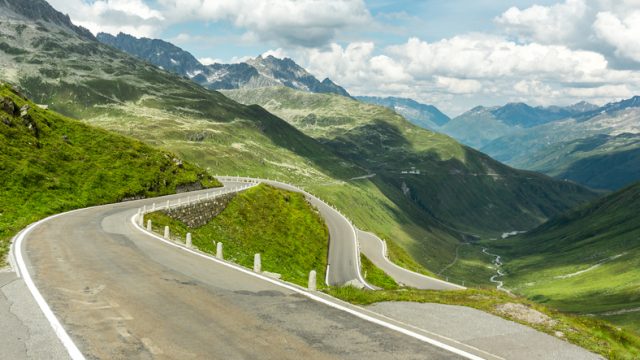
As the story unveils, Auric Goldfinger, the prime suspect, travels to Switzerland in his yellow-black Rolls Royce. He is accompanied by his assistant, Oddjob (Harold Sakata), and the pair are followed by Bond through what was supposed to be an off-road mountain pass near Geneva.
The scene was actually shot not too far from Geneva, approximately a 125 mile drive from the city, in the heart of the Furka Pass (Furkastrasse). The legendary mountain pass that is one of the world’s most iconic, exhilarating, and thrilling drives through the Swiss Alps was introduced in the movie when Goldfinger’s Rolls Royce entered the scene, and was immortalized with the chase scene that followed, with Bond’s Aston Martin DB5 racing Tilly Masterson’s (Tania Mallet) Ford Mustang convertible.
Something else was also forever made famous by this scene–something that strangely appeared in the middle of nowhere, in the snowy mountains of Switzerland at an altitude of almost 8,000 feet: the Belvédère Hotel. The jewel in the mountains that opened its doors for visitors in 1882, more than 80 years before Goldfinger, Bond, and Tania Mallet passed it in 1964.
It is rather uncanny, isn’t it? A hotel built where? Up in the sky in the back of beyond. And when cars were still a dream to-be-made reality, and Aston Martins, Rolls Royces, and Mustangs, not even a wildest imagination of those who dreamed of wheels.
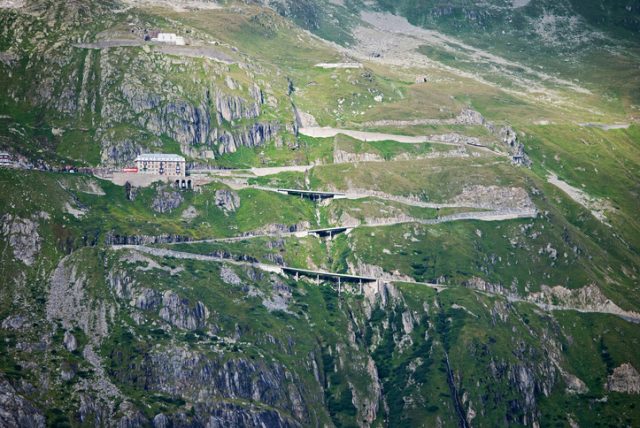
Truthfully, no one really knows for sure how and why it was built. What’s well established is that it was built right after the mountain pass was completed, probably as a lounge for people who wished to escape and enjoy the silence, or attend one of the many lavish parties held inside. So this might answer the question as to why it was built. Or maybe it was meant to be a resting place for the mountain workers, but, in no time, the charming location and what it offers in terms of isolation and excellence inspired the elite to climb the scenic road.
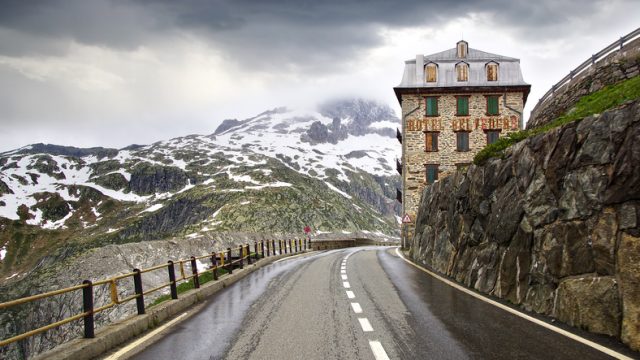
And then there is the Rhône glacier right next to it. Only 200 steps away, it offers a spectacular close-up view of an icy scenery like no other place on Earth. The Belvédère Hotel is raised on a rock, practically over the glacier, so the view is available right from the hotel’s balconies while guests are slurping their morning coffees. Not only that but from the 1890s onward, an ice chamber inside the glacier has been carved out, re-drilled and maintained as a walkable tunnel.
Although the glacier itself is of whitish, grayish color, the tunnel magically glows with an aqua tint. People used to pay a lot to enjoy its beauty while the sun is up, and enjoy the silence during the nights. When all you can ever hear is the water of the glacier and the howling of the winds.
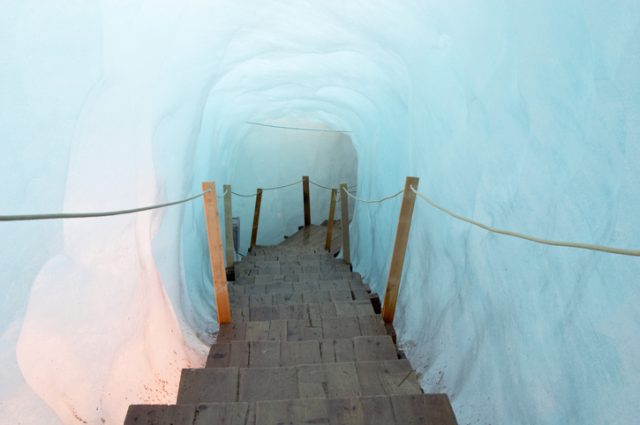
It is said that Sean Connery, who adored the place and was a regular customer, insisted on the location. The glacier is visible at the beginning of the scene right when Goldfinger passes the Belvédère hotel in his Rolls Royce on his way up the mountain. It was the film’s final scene to be shot, which ended on July 11, 1964, and it is indeed a fine place where a group can enjoy an overdue break from a job well done.
Goldfinger was spectacular at the box office both in the U.K. and the U.S., and grew to be many people’s favorite Bond over the years. However, the glacier, unfortunately, is not so near to the hotel anymore, and as of 2016 it is closed indefinitely, according to the official website. Today the hotel stands right where it stood 140 years ago when it was built, but completely empty, looking like a sad monument to those long lost glorious past times.
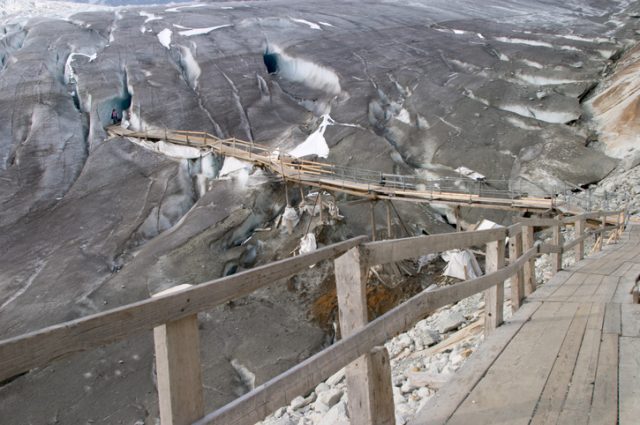
So what happened? Well, the 11,000-year-old glacier has retreated over the last 100 years or so to become a full mile shorter. Which means that the icy scenery beneath the hotel terrace is all gone now. To add to this, due to increased temperatures during the summers, it lost a lot of its thickness, so the ice cave that used to be at the bottom of the glacier, many meters under the ice, nowadays is “just an outcrop above, preserved by covering the ice in canvas sheets.”
What was a blue magical under-glacier tunnel, according to some is today just plain ordinary and wet. Nothing special really.
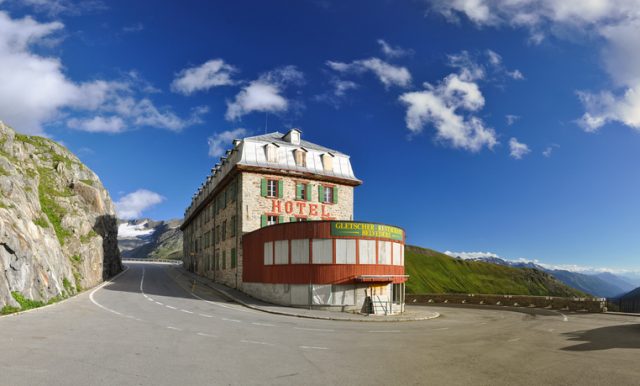
Since the main attraction is slowly disappearing, naturally, so is the business that kept its doors open. Furthermore, the road is inaccessible during harsh winter days so the hotel is closed for almost five to six months each year. In 2000, a new tunnel was built, bypassing the route to the Belvédère, which only made things harder for business. The rooms inside are just as they were in the 1880s, but are no longer vintage delights, but old and poorly maintained. More and more people came to see it, but less and less wished to stay in it. Unable to compete and sustain itself, it closed its doors.
The hotel industry is tough to begin with. This one, with the gradual loss of customers, and the much-needed income to maintain the place at the very least, how it kept going for so long is truly fascinating. Then again, all things must come to an end and nothing good lasts forever. Except for diamonds perhaps. Diamonds are forever.
